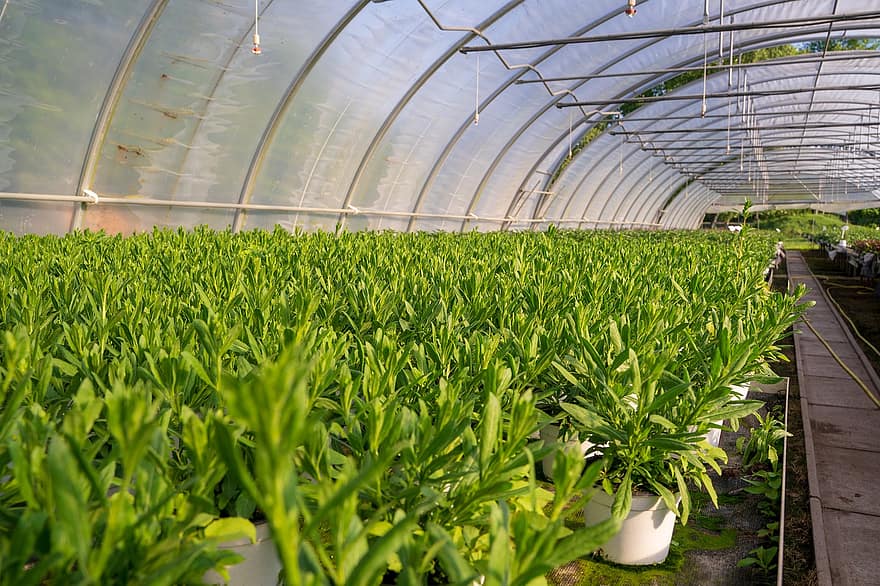It’s essential to know how to use Bioline Syngenta packets, sticking to the instructions to protect your greenhouse from pests. As a gardener, it can be daunting to see pests in the greenhouse because they can damage the crops and affect their quality and yield. However, you must also be responsible and well-informed on using biological control agents like Bioline Syngenta packets.
Much like keeping molds and weeds from the greenhouse, pests and insects are problems that gardeners must address immediately. But instead of using insecticides, it’s the better choice to use biological control agents that are safer for the health and environment. If you need a trusted distributor, the company Novartis merged with Zeneca Agrochemicals, forming the Syngenta Bioline.

How To Use Bioline Syngenta Packets For Best Protection
Bioline Syngenta packets are straightforward to use, but you must check the instructions recommended by the company. The latest product, which is mini sachets on a stick, is direct to use. The following paragraph is a straightforward explanation of the instructions for Bioline Syngenta packets.
Quick and straightforward
Tear the sachets along the perforations to separate them from each other. Each sachet is best for a shuttle tray, propagation tray, or pot measuring 6 inches or larger. Stick the sachet in each paraphernalia and place a sachet stick into a plug tray or pot cube.
Let the sachet sit above the growing media from a distance of ⅛ inch or 3.175 millimeters. You can then sit and expect that these sachets’ beneficial mites will emerge for an extended period. The company offers this packaging for Amblyline™ and Swirskiline™, and there are also sachets with a hanger if it’s your preferred design.
What makes these mini sachets more efficient is because they will consistently release beneficial mites for extended periods. They even utilize a water-resistant packaging so you can ensure that they stay in place regardless of rain and irrigation.
Additional instructions for storage and transport of Bioline Syngenta packets
When using Bioline Syngenta packets, you must also be diligent in storing and transporting them. For example, the sachets are vulnerable to heat, so be wary of hanging them in an area that sunlight hits or close to heating pipes. Bioline AgroSciences also recommends rotating the container to help distribute the mites in the carrier material.
Lastly, it’s best to use the biological control agents within 18 hours after you have received them. If transporting and storing are necessary, keep them in an area with 65% humidity and temperatures at 50 to 59°F.
What Are Bioline Syngenta Packets?
Bioline Syngenta Packets are biological control agents using a controlled release system. As a gardener, biological control systems are much better than using insecticides, significantly if you’re growing crops for consumption. Greenhouse farmers opt for biological control agents since they are limited with pesticides that would be allowed for indoor use.
Therefore, you can still take pride in producing pesticide-free plants and not worry about pests with Bioline Syngenta packets’ help. These packets can prevent whiteflies, broad mites, and thrips from increasing in population by controlling them early in propagation or point of seeding where plants are more vulnerable. This way, you can prevent infestation and avoid problems when their numbers are much harder to control.
Compared to broadcast applications, these sachets will release mites for as long as eight weeks. You can use them early in the plants’ development without the risk of damage in their growth. Compared to pesticides that can be too harsh to your crops, using predatory and beneficial insects offer no danger to young and vulnerable plants.
What are the biological control agents offered by Bioline Syngenta
Bioline Agrosciences offers different biological control agents in 29 products. They include a selection of beneficial wasps, mites, nematodes, and beetles. You’ll also find biological control agents with specifications for crops such as berries.
For example, Amblyline™ releases Amblyseius cucumeris to control thrip and spider mite populations. Adrenaline releases another predatory mite that can handle small arthropods and will also feed on pollen. This biological control agent is ideal for greenhouse preventative protection.
The company also has predatory wasps and midges for controlling aphids, Aphiline Berry that is specifically useful for those growing berries, and Aphiline Veg is best for mixed ornamental crops. If you have mealybugs, consider Chrysoline and Cryptoline, while Digline is best for leafminer pests and Exhibitline Hb for black vine weevil larvae common in ornamentals and berries. For gnats, you can use Hypoline and Phytoline, and the company also has predatory beetles for protection against soil and compost pests.
Conclusion
One of the best things about growing in a greenhouse is that you can make it as natural and organic as possible. This includes skipping pesticides and using biological control agents, but do you know how to use Bioline Syngenta packets optimally?
Bioline Syngenta packets are quick and straightforward to use, and you can benefit from them early on since they don’t damage young plants. Using them is as easy as putting one sachet per tray or pot, and it will release mites for as long as eight weeks.
Overall, biological control agents solve the limitation of greenhouse gardeners who can’t use pesticides indoors. Just remember to keep the packets away from heat and use them within 18 hours upon receiving.
